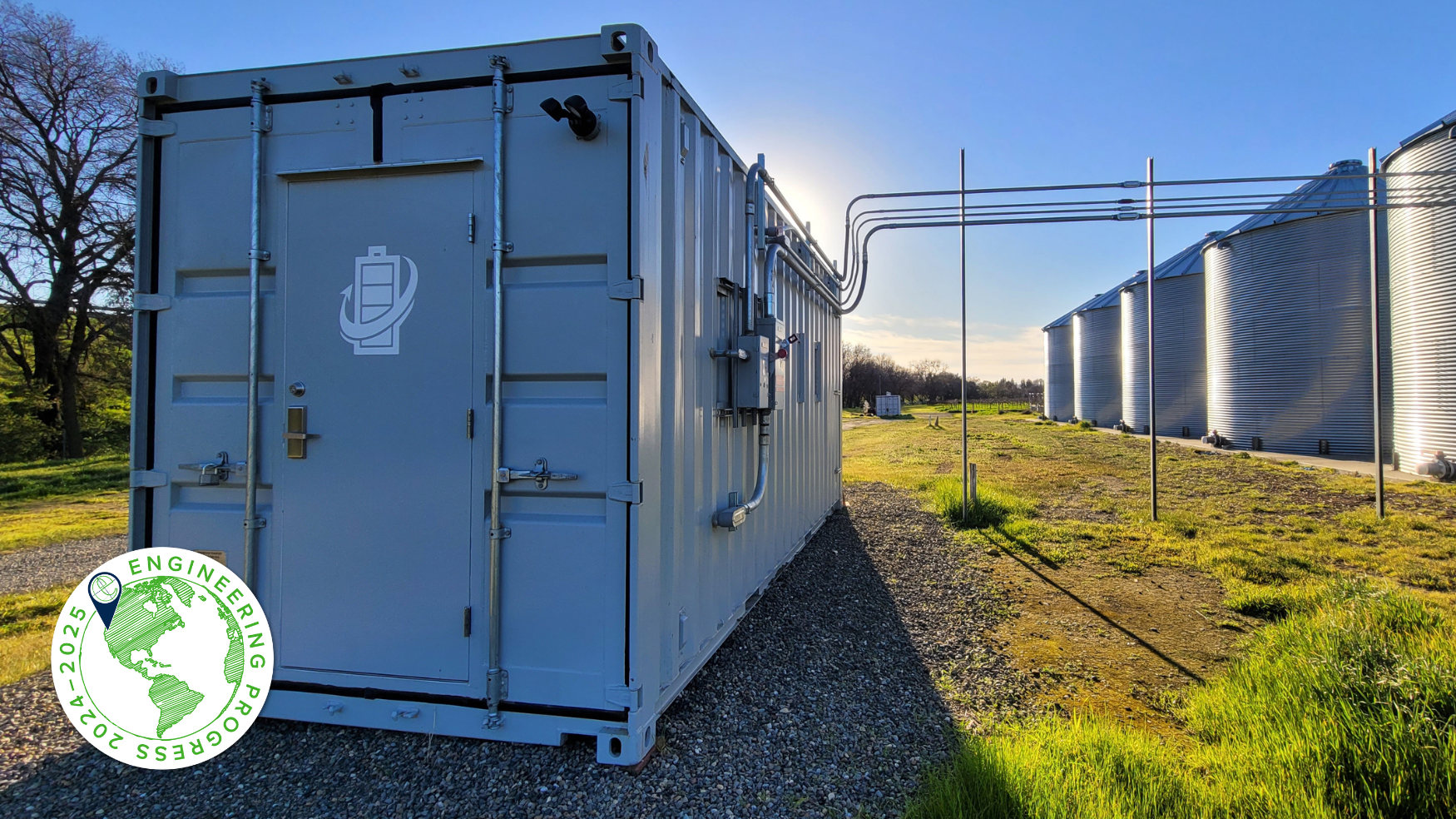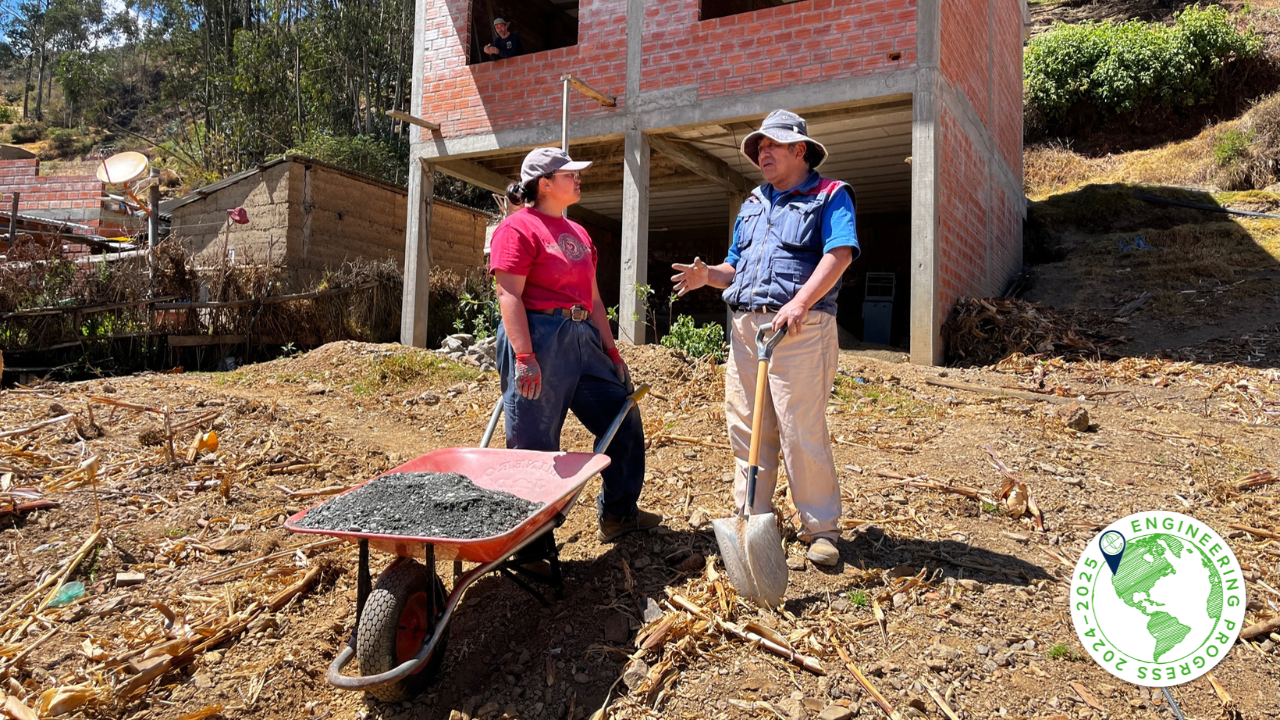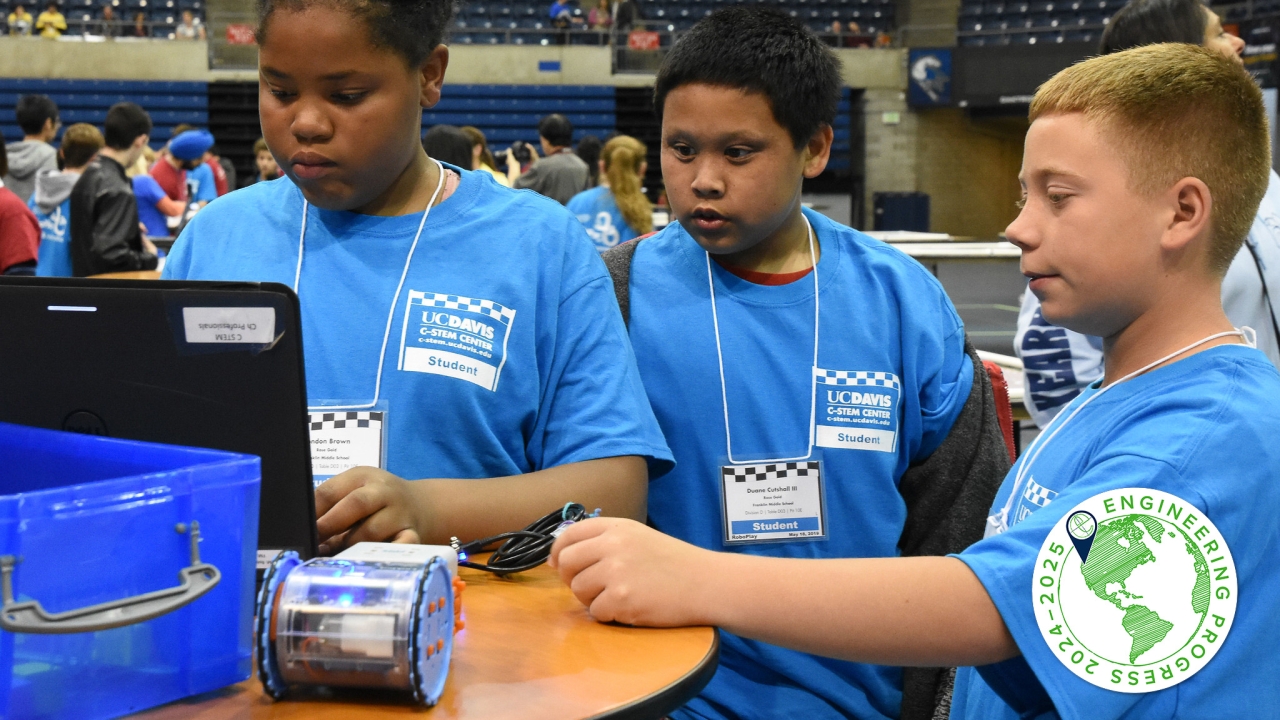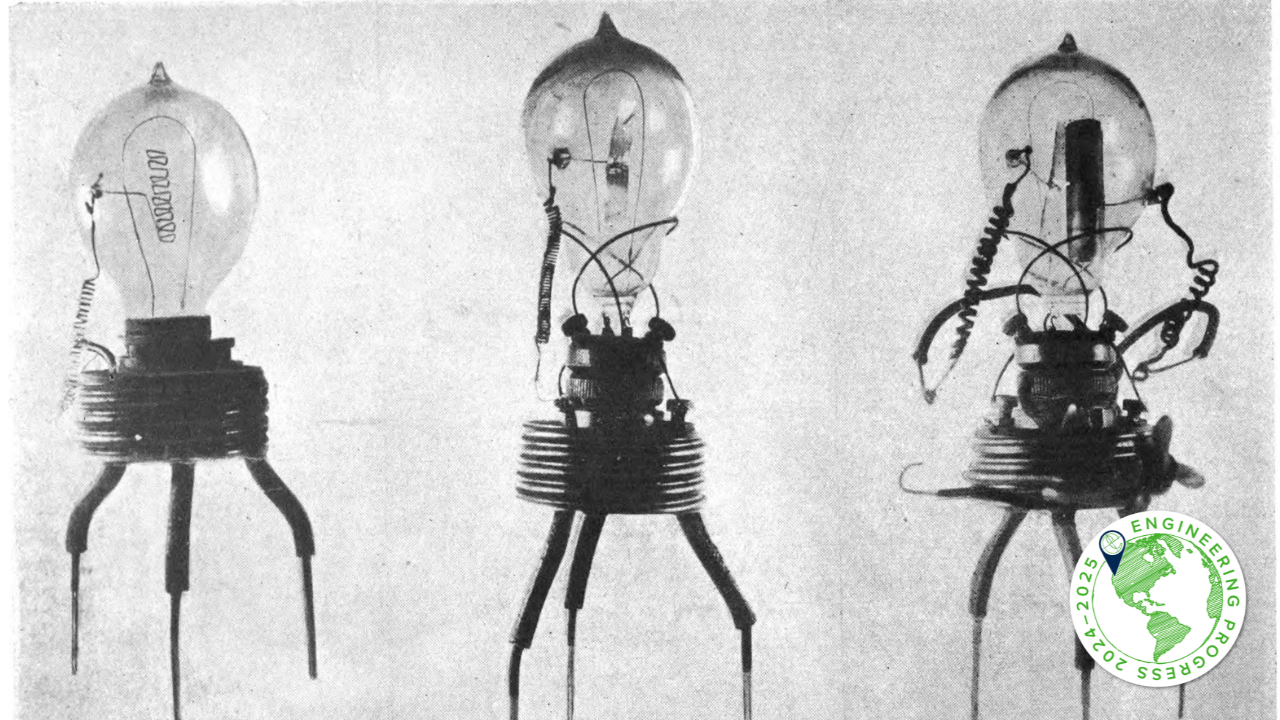Charging Ahead
A shipping container stands near the Robert Mondavi Institute for Wine and Food Science on the UC Davis campus. A researcher in the College of Engineering has recycled the container into an innovative energy storage system by way of repurposed electric vehicle batteries housed inside. (Courtesy of Jae Wan Park)
A UC Davis-grown green energy storage solution gives new life to retired electric vehicle batteries

by Jessica Heath | Engineering Progress Magazine 2024-25
In 2011, Jae Wan Park, a professor of mechanical and aerospace engineering at the University of California, Davis, had his first electric car.
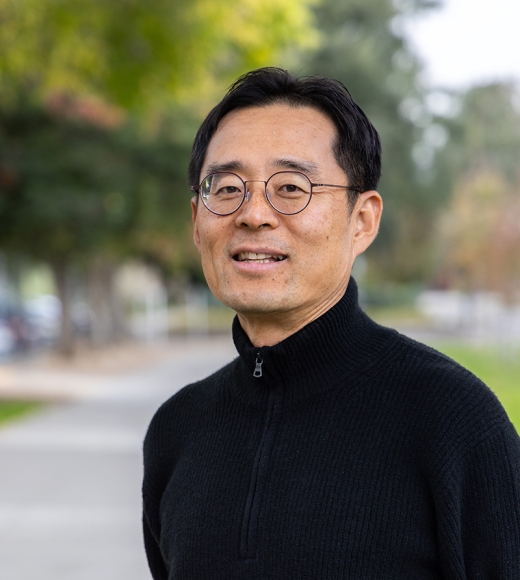
"It was small, almost like a golf cart, but it had a roof and a door and 10 kilowatt-hour lead acid batteries," he said.
The car had about 17 miles of driving range when he purchased it. After driving it around his neighborhood for about a year and a half, Park noticed the range decreased to eight or nine miles. He realized he had to replace the degrading battery pack.
"That was the moment I thought, 'What do you do with this half-dead battery?'"
At the same time, renewable energy like wind and solar were becoming ubiquitous. Those energy sources need storage, like batteries, which can charge while energy is being generated, and discharge energy during peak times to relieve the power grid. Instead of building new batteries for these storage systems, Park imagined a system built from half-used EV batteries that still have capacity.
Park submitted a proposal to California Solar Initiative to demonstrate an energy storage system using second life electric vehicle, or EV, batteries. The small grant resulted in the installation of a 10 kilowatt-hour system at one of the UC Davis-owned residential townhouses and launched more than a decade of research, a rising-star green tech company and a solution to the tidal wave of retired EV batteries about to crash down upon the U.S.
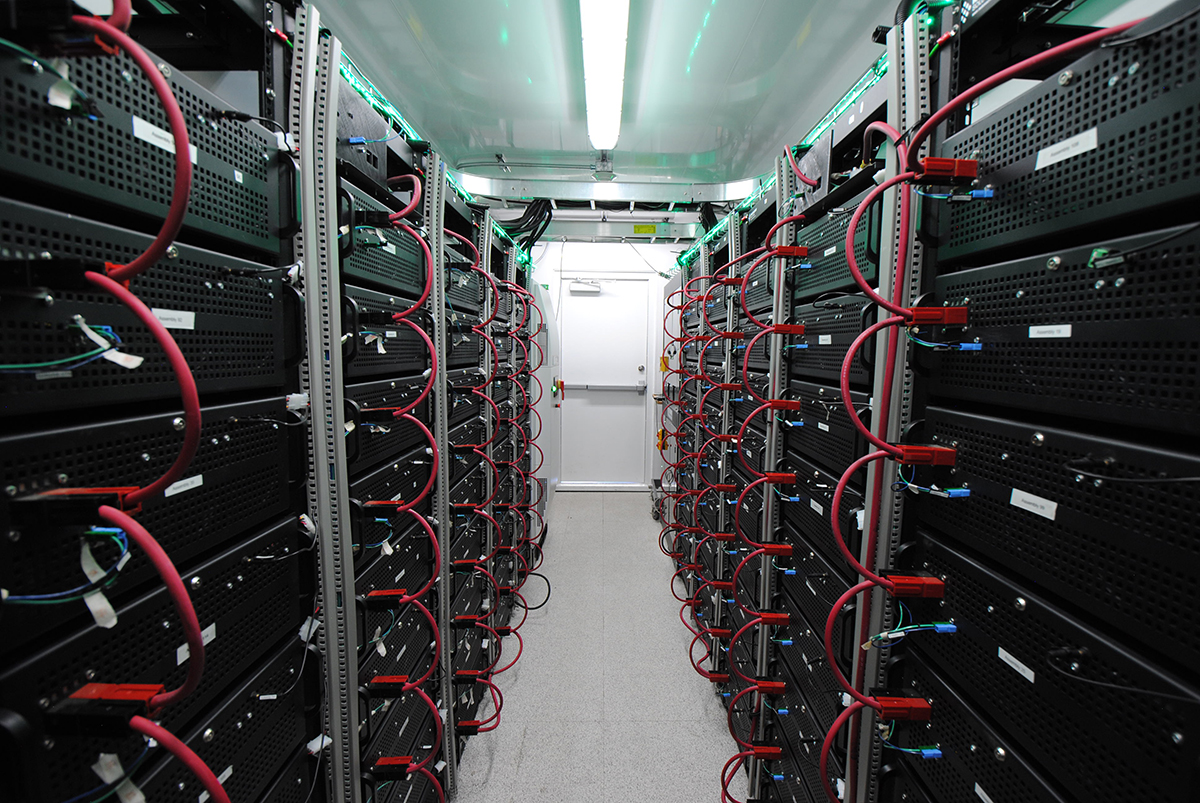
Building a Battery Pathway
RePurpose Energy resides in a Fairfield warehouse. With eight employees working at computers, it's pretty quiet inside, except for a constant low-grade hum.
It's the sound of EV batteries being charged and assessed for their state of health, one of the core technologies that Park, the CEO, and his team developed for the company, which launched in 2017 with help from UC Davis Venture Catalyst.
When he first started the research, Park could only test about 12 battery modules (or multiple battery cells mounted together in a frame) a day by discharging and recharging each battery. Now, his team can do that same amount in roughly three minutes, using machine learning algorithms to determine the state of health. The company also provides software that can track the state of health of the EV battery modules in real time.
This type of technology is becoming ever more crucial with decrees coming from state and federal governments for net-zero emissions. The U.S. has committed to a carbon-free power sector by 2035, and California aims to hit 100% zero-emission vehicle sales and 100% carbon-free power in the next 10 and 20 years, respectively.
The strides being taken toward renewable energy are admirable, Park says, but that energy needs to be kept somewhere.
"Solar and wind are really the only ways to achieve our renewable energy goals, but they need storage systems," he said. "How do we store the energy? With a battery."
One of the key issues, though, is that there is not enough lithium cobalt nickel to build the number of batteries needed to support storage systems that would meet these aggressive environmental goals.
EV sales in the U.S. hit 1 million last year and are expected to grow up to 30% every year. Combined with California's elimination of internal combustion engine vehicle sales by 2035, that means that some 34 million EV battery packs will accumulate in the next five years. On top of that, the EV battery recycling infrastructure is not progressing at the same pace as manufacturing.
"We say that a tsunami of EV batteries is coming," said Park. "If we don't prepare for this, it will be a big disaster."
If the amount of EV batteries on the horizon were to be reused the way RePurpose Energy is proposing, they could cover the entire energy storage demand in the U.S. This system could reduce the amount of cobalt and lithium needed to make new batteries by tens of millions of pounds and carbon emissions by 10 million tons.
For Park and his team, it's not a question of whether this should be done, but rather, how this can be done.

Heeding the Charge
In the warehouse, huge shelves are stacked to the ceiling with pallets of modules, which have been loaded with tested EV batteries. They wait until they are ready to be placed into a storage system made from shipping containers.
Their first commercial-scale second life energy system was installed in 2018 at the UC Davis Robert Mondavi Institute for Wine and Food Science. The system features 1,000 Nissan EV battery modules with a capacity of 270 kilowatt-hours (that could power an LED light bulb for three years of continuous use) to store solar-powered electricity and discharge electricity during peak energy periods.
This installation was the major jumping-off point for Park and the RePurpose Energy team to set the wheels in motion for commercializing the technology they developed. In 2019, the company won prizes at the Big Ideas contest, supported by UC Berkeley and the Rudd Family Foundation, as well as from the UC Davis Big Bang! Business Competition, which gave them funds and resources to build their business. Two years later, the company secured a license negotiated by the Technology Transfer Office, a unit within the UC Davis Office of Research that fosters the transition of research to real-world application.

The company is gaining momentum and working on expanding. In September, RePurpose Energy delivered a 1.2 megawatt-hour system to Nissan USA at its Tennessee headquarters; that's enough power for a typical EV to drive round trip from Dallas, Texas, to Vancouver, Canada, and still have miles left over.
They are working with the federal and state governments to install a 4 megawatt-hour and a 2 megawatt-hour system at a solar farm in Florida, and a 200-kilowatt-hour system at a clinic in Northern California, respectively.
The company was also recognized this past year by Time Magazine, which ranked RePurpose Energy as one of America's top green tech companies, and by the U.S. Department of Energy, which selected RePurpose Energy as one of 25 companies to receive its Re-X Before Recycling Prize.
With a long road ahead, the RePurpose Energy team is working relentlessly to prepare for the mountain of EV batteries on its way. Though the road may be difficult at times, Park says putting in the effort today may allow for peace of mind later.
"It's tough – at the end of the day, we're tired and sometimes we want to give up. But we're enjoying the journey and when we make small progress, we can smile, and if we sweat more now, our future will be brighter."

This article was featured in our 2024-2025 digital edition of Engineering Progress Magazine. Read more stories.

